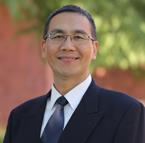Invited Speaker----Dr. Bor-Jier (Ben) Shiau

Professor, Mewbourne School of Petroleum and Geological Engineering, The University of Oklahoma, Norman, Oklahoma, U.S.A.
Dr. Bor-Jier (Ben) Shiau is a professor and Mewbourne Chair in Petroleum Engineering at the University of Oklahoma, USA. He has published over 40 refereed journal articles, and holds over 10 patents. He has over 28 years of research experience in designing formulations for groundwater remediation and EOR systems. Dr. Shiau previously worked for private sectors and U.S. EPA on numerous environmental remediation projects, both abiotic and biotic technologies (1997-2008). The primary theme of his research has been in colloid and surface chemistry to explore better understandings of the liquid/liquid, liquid/solid, liquid/gas interactions and various complex fluid phenomena, including microemulsions, nanodispersion, foams, nanogels, and viscoelastic fluid characterization and behaviors. He received various Awards from AOCS, NGWA, AIChE, and OU in recognizing his research efforts and contributions.
Speech Title: Microemulsion Formulations for Environmental Remediation and Enhanced Oil Recovery: from Laboratory to Field Implementation
Abstract: A Winsor Type III microemulsion is a separate, surfactant-rich phase that forms in equilibrium with excess oil and water. Varying the amount of an added simple electrolyte can induce the formation of a Type III microemulsion from an oil/water/surfactant system. The concentration of sodium chloride at which equal volumes of oil and water partition into the middle phase is called the optimal salinity, which exhibits ultra-low interfacial tension (IFT) with capacity of mobilization of the entrapped contaminants and hydrocarbons in porous media. We will discuss the critical formulation parameters, ranging from surfactant structures, phase behaviors and separations (e.g., adsorption), impacts of oil properties (both light and dense non-aqueous phase liquids), water chemistry and specific ions effects, and additives like co-solvents. The hydrophilic-lipophilic difference (HLD) equation has shown utility in guiding surfactant formulations for Winsor I, II and III microemulsions under various subsurface conditions, ranging from unconsolidated sands to consolidated rock matrix. Injection of the developed surfactant-only formulations (or so called Surfactant Enhanced Aquifer Remediation, SEAR) exhibited superior performances for remediation of source zone contaminations in subsurface in last decade. Examples of successful field-scale tests from single-well pilot to full-scale implementation projects will be described. More recently, we also developed modified surfactant formulation suitable for contaminated sites impacted by dense non-aqueous phase liquids (DNAPLs). For some EOR applications, the selected surfactant systems could tolerate extreme high total dissolved solids (TDS) (> 150,000 mg/L) conditions and exhibit exceptional potential on improving crude oil recovery for mature oil fields.



